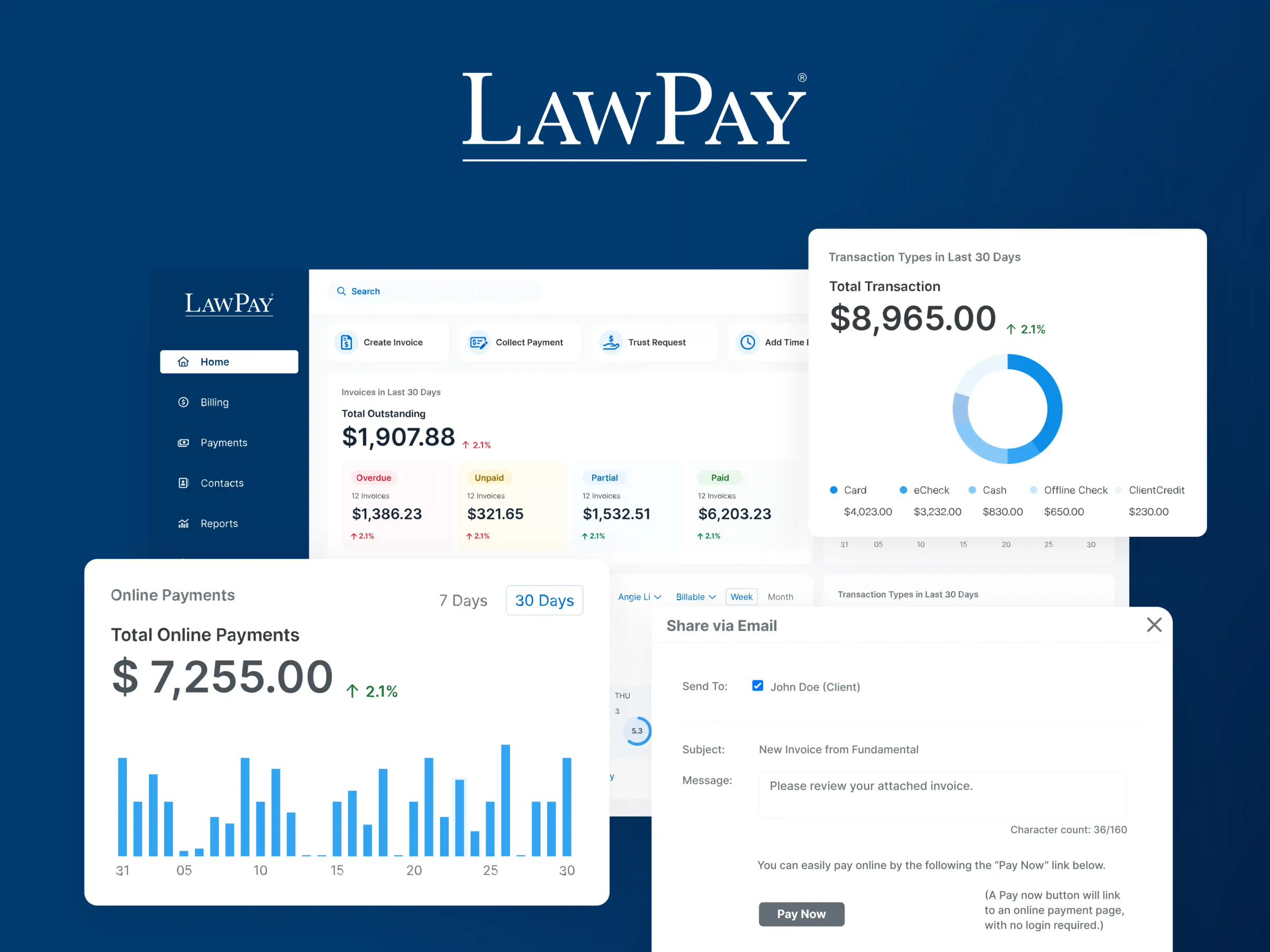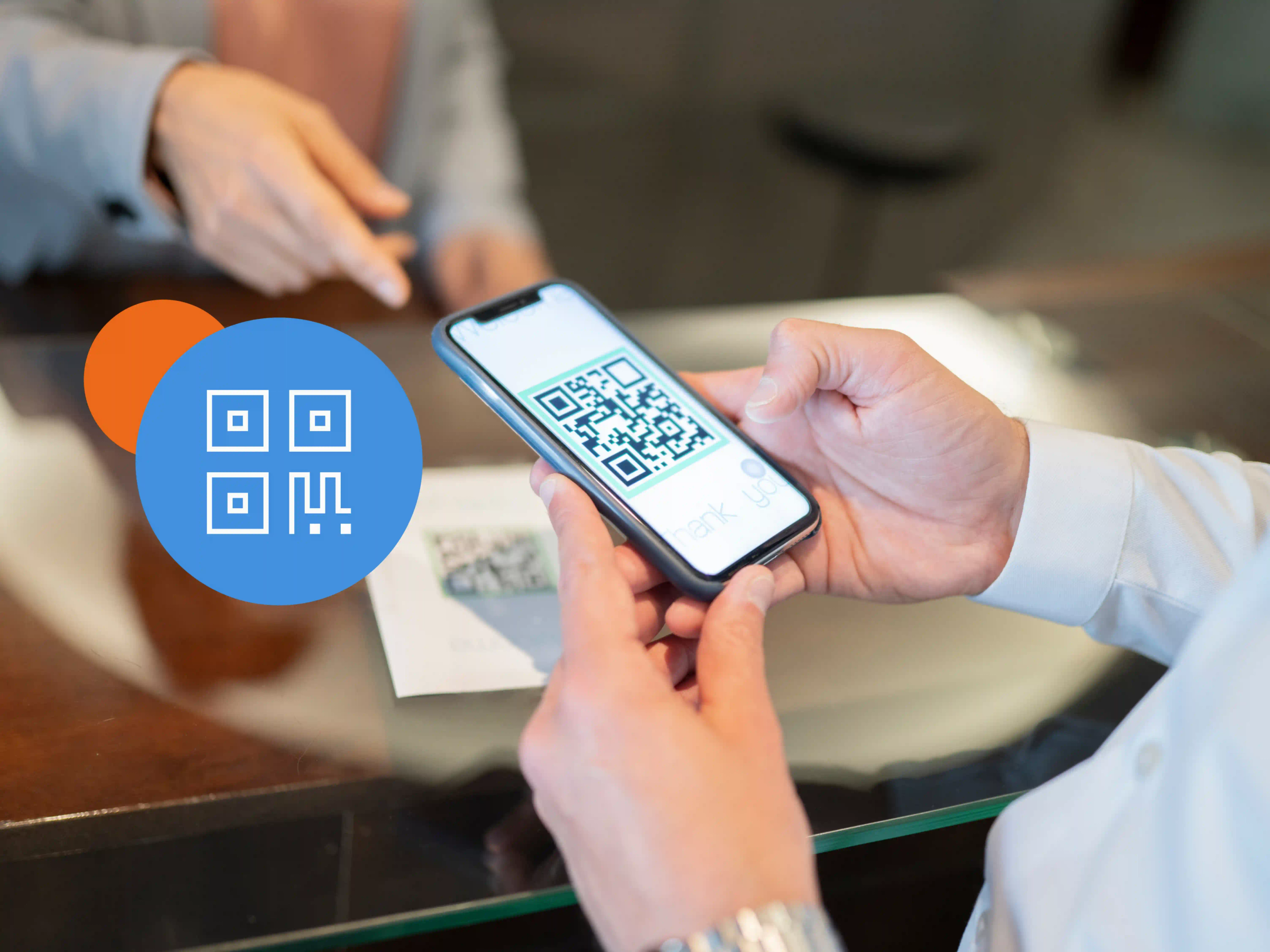Quick Response codes, more commonly known as QR codes, provide a fast, secure way for clients to pay their law firm bills. For lawyers, the value proposition of implementing QR codes for bill payment is straightforward: Removing friction from the payments process translates into happier clients and stronger cash flow for your firm.
Read on to learn how QR codes for billing work and why every law firm should implement this in-demand payment method.
What Is a QR Code Payment?
QR codes work like barcodes. The code is a unique, visual combination of squares and dots that a QR code reader can scan to quickly interpret and act upon. Often, the embedded information in a QR code is a URL.
Anyone with a current-model smartphone has easy access to a QR code reader. Modern iPhones and Android devices have QR code readers built into their cameras. These devices can scan QR codes that are printed on paper or displayed digitally on a website or application.
When a smartphone detects a URL embedded in the QR code, it prompts the user to tap to follow the link. The advantage is that the user can access that website address without having to type a complex URL into a browser.
QR code payments occur when a QR code directs a client to a secure payment page. Once there, the client shares his or her account numbers and processes electronic payments, as needed.
One of the main benefits of using a QR code payment is that the entire flow happens on the client's smartphone. Staff on the billing side of the transaction does not see or collect any sensitive information, allowing the client to keep that information private.
How Do QR Code Payments Work?
The basic process for QR code payments is as follows: The biller shares a unique QR code with their clients. Clients then use the camera on their smartphone to scan the code. The smartphone notifies clients of the URL in the code, and requests permission to follow the link. If the client agrees, the smartphone loads a secure payment page.
In the most efficient QR code payment implementations, the client does not have to log in, or provide anything other than their payment details directly on the payment page. Behind the scenes, the application uses the client's unique information to reconcile the payment to the appropriate account.
Scanning and loading the payment page should take seconds, assuming the client has a stable internet connection. This scan-and-go process eliminates some of the more frustrating outcomes of accessing payment portals, such as mistyping long URLs and being prompted to reset account passwords.
Why Should Your Law Firm Accept QR Code Payments?
Accepting QR code payments provides major advantages for both your clients and your law firm. Your clients will enjoy a better, faster payment process that's socially distanced and secure. As a result, you're likely to see improved client retention, reduced accounts receivable, and healthier cash flow.
Here is a closer look at five specific benefits you can expect from implementing QR code payments.
1. Faster, Easier Payments
The primary benefit of allowing clients to pay with QR codes is that it streamlines payment submission. This means your firm gets paid faster.
You can share your firm's unique QR codes with clients at the reception desk in your office. For example, at checkout for in-person consultations, your client can scan the code and pay the bill before leaving the office. Encouraging in-person payments shortly after the consultations can dramatically reduce the time your staff spends on collections.
You can also add QR codes to printed and emailed invoices and statements. For those who prefer printed bills, the QR code enables them to pay electronically without typing out a URL. Even better, the presence of a QR code may encourage clients who are paying by check to switch to electronic payments.
2. Upgraded Payment Experience
According to a Mastercard global study, almost 80% of consumers report using contactless payments. These consumers cited safety, cleanliness, and convenience as the primary drivers of their decision. This supports research from software provider Blue Bite, which concludes that the number of QR interactions nearly doubled between 2018 and 2020.
In short, more clients want and expect modern, contactless payment options. Providing these choices supports your broader efforts to remain competitive with other law firms and provide an excellent client experience.
3. Safe, Socially Distanced, and Eco-Friendly Payments
If you allow clients to pay with QR codes, you can process in-person collections at a safe distance. Clients will pay their bills entirely on their phones, without physically handing you a credit card, check, or cash. Limiting hand-to-hand exchange of information reduces the spread of transmissible diseases and helps protect your staff and clients.
Also, QR code payments, along with emailed invoicing and receipts, support your law firm's transition to a paperless office. As you move your clients over to electronic payments, you'll reduce paper consumption and paper waste. This lowers your overhead costs and benefits the environment as an added bonus.
4. Increased Security and PCI Compliance
The best QR code payment apps are more secure than traditional payment methods -- including cash, paper checks, and credit cards. Many clients prefer paying the bill independently via the QR code process vs. handing you a check or credit card. Both checks and credit cards expose account numbers, which increases the client's risk of identity theft.
Not handling credit card numbers directly also supports your firm's efforts to achieve and maintain payment card industry (PCI) compliance. PCI compliance standards define how merchants should keep their customers' credit card information secure, a requirement of all credit card companies. Violation of PCI standards increases your firm's risk of a data breach. A data breach, in turn, can generate negative publicity, lost customers, and fines.
However, when clients scan a LawPay QR code, they are directed to your firm's custom, mobile-optimized, and securely hosted payment page. The payment details are automatically encrypted and processed, but they are not stored locally in your firm's systems. This dynamic process reduces security risk, because hackers cannot access card numbers if you don't save them on your own machine.
5. Commitment to Your Clients
Incorporating QR code payments also supports your acquisition and retention efforts. Yes, your firm's core focus is providing solid legal representation. However, a simple, flexible, and secure payment system is also a necessary component of a positive client experience.
Your law firm must deliver on two fronts—the legal service itself and the administrative process. Providing convenient payment options addresses the administrative side and demonstrates your broader commitment to your clients' well-being.
Show that you respect your clients and their time, and they will respond with their loyalty and referrals.
How to Accept QR Code Payments for Your Firm
You can accept QR payments in two ways. The first is using a QR code generator to create a link to a secure payment page.
In this implementation, you'll need to ensure the QR code targets the right customer so you can apply payments appropriately. You might ask the customer to log in, for example. Otherwise, your staff will need to review and manually apply each payment to the right customer account.
An easier method is to use a payment software that already integrates QR codes. The best QR code payment apps aren't standalone applications—they're built into comprehensive solutions that support various payment types, including eChecks, credit cards, debit cards, and ACH payments.
Schedule a demo to see what LawPay can offer your firm.
Book Now
Your provider should give you a QR code that links to your firm's customized payment page. You can then print out the code to display in the front office and train your staff to promote scan-and-go payments. You can also place your QR code for payment on printed client invoices and statements.
When clients use the QR code, the collections are processed and reconciled through your payment software, just like any other payment.
Manage your Law Firm's Payments Today
LawPay's online payment solution incorporates QR payments to keep your firm compliant with IOLTA guidelines and PCI standards. You can also opt for separate payment pages, say for trust payments vs. service payments. In that case, you would have a unique QR code for each of your payment pages.
From there, implementation of LawPay QR code payments is simple. You share the appropriate codes in your office and on your invoices. Your clients scan the code, load the payment page, and enter their payment details. Since clients provide their payment details directly on the page, you can skip the step of inputting the client's card number in the LawPay mobile payment app.
QR code payments are an evolution in lawyer payment methods. They help your clients pay bills faster and reduce the time your staff spends on collections. Longer-term, you'll reduce costs, improve cash flow, enjoy deeper customer relationships, and generate more client referrals.
To learn more about LawPay’s QR code payment feature and our full suite of payment tools, schedule your personalized demo now.
About the author

Catherine Brock
